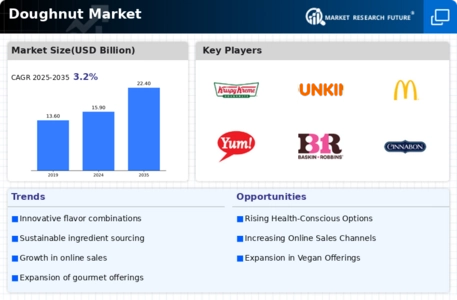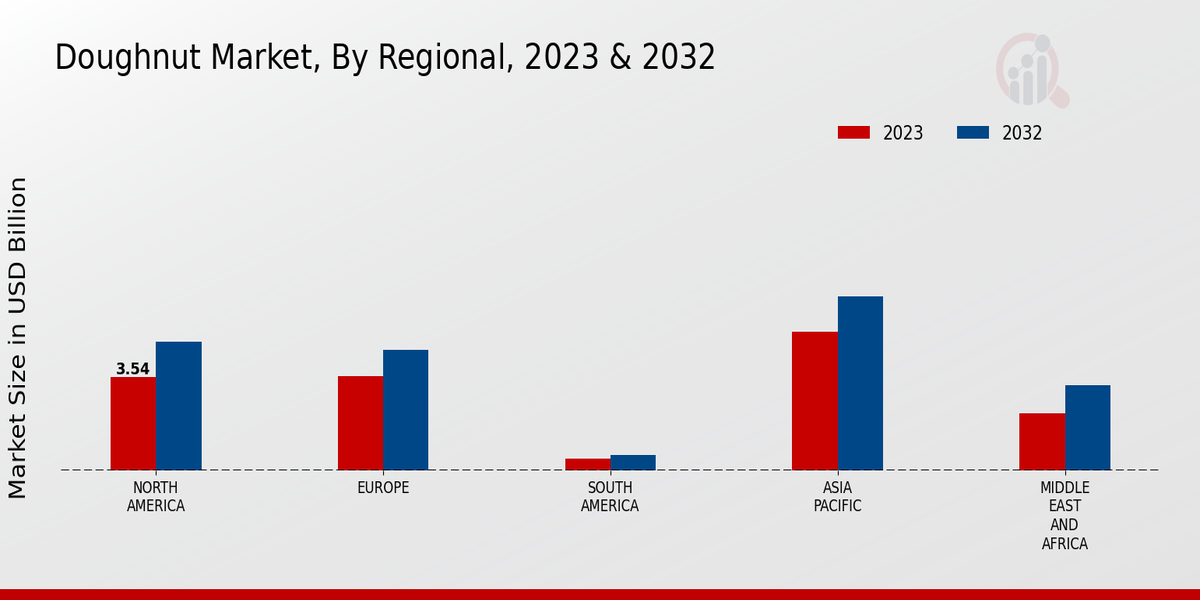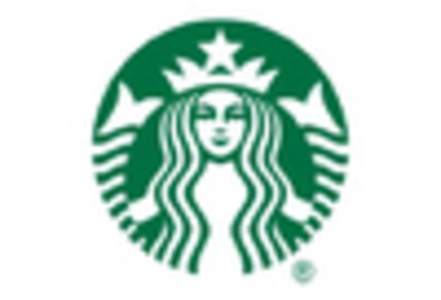Rising Consumer Demand
The Global Doughnut Market Industry experiences a notable increase in consumer demand, driven by the growing popularity of indulgent snacks. In 2024, the market is projected to reach 15.9 USD Billion, reflecting a shift in consumer preferences towards sweet treats. This trend is particularly evident among younger demographics, who are increasingly seeking unique flavors and artisanal options. As consumers become more adventurous, doughnut shops are innovating with gourmet offerings, which further fuels market growth. The rising demand for convenience foods also plays a role, as doughnuts are often perceived as quick and satisfying snacks, contributing to the industry's expansion.
Market Growth Projections
The Global Doughnut Market Industry is projected to experience substantial growth, with forecasts indicating a market size of 15.9 USD Billion in 2024 and an anticipated increase to 22.4 USD Billion by 2035. This growth trajectory suggests a compound annual growth rate of 3.17% from 2025 to 2035. Such projections highlight the industry's resilience and adaptability in a competitive landscape. Factors contributing to this growth include rising consumer demand, innovative product offerings, and the expansion of distribution channels. As the market evolves, stakeholders must remain vigilant in responding to consumer preferences and industry trends to capitalize on emerging opportunities.
Innovative Flavor Profiles
Innovation in flavor profiles significantly influences the Global Doughnut Market Industry. Bakeries and manufacturers are experimenting with diverse ingredients and unique combinations, appealing to a broader audience. For instance, the introduction of exotic flavors such as matcha, lavender, and even savory options like bacon maple has captured consumer interest. This trend not only enhances the product offering but also encourages repeat purchases, as customers seek new experiences. The continuous evolution of flavors aligns with the projected market growth, as the industry anticipates reaching 22.4 USD Billion by 2035. Such creativity in flavor development is likely to sustain consumer engagement and drive sales.
Cultural Influence and Trends
Cultural influences and trends significantly shape the Global Doughnut Market Industry. The rise of social media has transformed how consumers engage with food, with visually appealing doughnuts becoming popular subjects for sharing. This phenomenon encourages bakeries to create aesthetically pleasing products that attract attention online. Furthermore, cultural events and celebrations often feature doughnuts, enhancing their status as a beloved treat. As these trends continue to evolve, they are likely to sustain consumer interest and drive market growth. The industry's ability to adapt to cultural shifts will be essential for maintaining relevance and capturing new audiences.
Health-Conscious Alternatives
The Global Doughnut Market Industry is witnessing a shift towards health-conscious alternatives, responding to increasing consumer awareness regarding nutrition. Bakeries are now offering gluten-free, vegan, and reduced-sugar options, catering to diverse dietary preferences. This trend is particularly relevant as consumers become more discerning about their food choices, seeking indulgence without compromising health. The introduction of these alternatives may contribute to the industry's growth, as it attracts a wider customer base. As the market evolves, it is essential for producers to balance indulgence with health, ensuring that they meet the changing demands of consumers while maintaining flavor and quality.
Expansion of Distribution Channels
The expansion of distribution channels plays a crucial role in the Global Doughnut Market Industry. With the rise of e-commerce and food delivery services, consumers have greater access to doughnut products than ever before. This trend is particularly beneficial for small and artisanal bakeries that can reach a wider audience through online platforms. Additionally, partnerships with coffee shops and convenience stores enhance visibility and availability, further driving sales. As the market adapts to these changes, the projected compound annual growth rate of 3.17% from 2025 to 2035 suggests that the industry will continue to thrive, supported by improved distribution strategies.






















